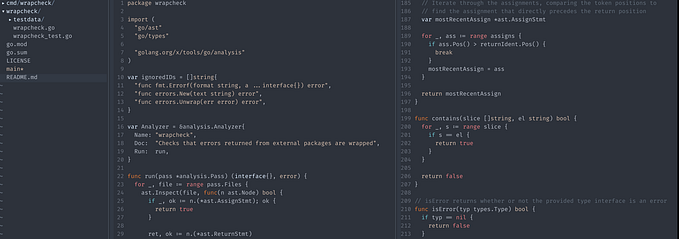Digital Currencies, Cryptocurrencies, DeFi, Staking, Exchanges: Exploring the Future of Finance

Introduction
The world of finance has undergone a remarkable transformation in recent years, with digital currencies taking center stage. From the emergence of cryptocurrencies to the rise of decentralized finance (DeFi) platforms, the financial landscape is evolving at an unprecedented pace. In this article, we will delve into the fascinating realm of digital currencies, explore the concept of digicash, understand the importance of timestamping documents, examine the revolutionary potential of cryptocurrencies, discuss the fundamentals of DeFi and staking, and shed light on the dynamic nature of exchanges. So, fasten your seatbelts as we embark on this journey into the future of finance!
Digital Currencies: A Paradigm Shift in Payments
Digital currencies have revolutionized the way we transact and store value. Unlike traditional fiat currencies, digital currencies exist exclusively in digital form and rely on cryptographic techniques to secure transactions and control the creation of new units. One of the pioneers in this space is Bitcoin, the first decentralized cryptocurrency introduced by an anonymous person or group of individuals under the pseudonym Satoshi Nakamoto. Bitcoin paved the way for a plethora of digital currencies that followed, each with its unique features and use cases.
The Rise of Digicash
Digicash, a precursor to modern cryptocurrencies, was developed by David Chaum in the 1980s. It aimed to provide a secure and private form of electronic money. Digicash utilized cryptographic techniques to ensure the confidentiality and integrity of transactions, pioneering concepts that laid the foundation for the future of digital currencies. Although Digicash did not achieve widespread adoption, it served as a critical stepping stone towards the development of modern cryptocurrencies.
Timestamping of Documents: Ensuring Authenticity and Integrity
In an increasingly digital world, the ability to verify the authenticity and integrity of documents is of paramount importance. Timestamping, a process that assigns a unique identifier to a document, enables us to establish when the document was created or modified. This technology finds particular relevance in the realm of digital currencies, where the immutability of transaction records is crucial. By employing timestamping techniques, we can ensure the verifiability of digital currency transactions and provide a robust framework for auditing and dispute resolution. The first papers on this topic were released in 1990 by Haber and Stornetta, the initial principals behind Bitcoin.
Cryptocurrencies: Unleashing the Potential of Digital Assets
Cryptocurrencies have captured the imagination of investors, technologists, and enthusiasts alike. These digital assets operate on decentralized networks, utilizing blockchain technology to enable secure and transparent transactions. Let’s explore some of the key concepts and considerations surrounding cryptocurrencies.
What Are Cryptocurrencies?
Cryptocurrencies are digital or virtual currencies that employ cryptography for security. They utilize decentralized networks, such as blockchain, to facilitate transactions and eliminate the need for intermediaries like banks. Cryptocurrencies offer benefits such as increased transparency, lower transaction costs, and improved accessibility.
How Do Cryptocurrencies Work?
Cryptocurrencies leverage blockchain technology, which is a distributed ledger that records transactions across multiple computers or nodes. Each transaction is bundled into a block, which is added to the chain in a chronological order. The decentralized nature of blockchain ensures that transactions are transparent, secure, and resistant to tampering.
Popular Cryptocurrencies in the Market
The cryptocurrency market boasts a wide array of digital assets, each with its unique characteristics and use cases. Let’s take a brief look at some of the most popular cryptocurrencies:
- Bitcoin (BTC): As the pioneering cryptocurrency, Bitcoin holds a dominant position in the market. It serves as a store of value and a medium of exchange, with its scarcity and decentralization contributing to its appeal.
- Ethereum (ETH): Ethereum introduced the concept of smart contracts, which paved the way for the development of decentralized applications (DApps) and the rise of DeFi platforms. It remains one of the most influential cryptocurrencies to date.
- Ripple (XRP): Ripple aims to facilitate fast and cost-effective international money transfers. Its blockchain-based solution has garnered significant attention from traditional financial institutions.
- Litecoin (LTC): Created by Charlie Lee, a former Google engineer, Litecoin shares many similarities with Bitcoin but offers faster block generation times and a different hashing algorithm.
- Cardano (ADA): Cardano distinguishes itself through its focus on scientific research, aiming to build a secure and scalable platform for the development of DApps and smart contracts.
The Impact of DeFi and Staking
DeFi has emerged as a disruptive force within the cryptocurrency space, aiming to revolutionize traditional financial systems by offering open and permissionless access to a wide range of financial services. Staking, on the other hand, is a process that allows cryptocurrency holders to participate in the consensus mechanism of a blockchain network and earn rewards. Let’s explore these concepts further:
Understanding DeFi
DeFi, short for decentralized finance, refers to the application of blockchain technology in traditional financial systems. It encompasses a wide range of financial services, including lending, borrowing, asset management, and decentralized exchanges. DeFi platforms eliminate the need for intermediaries, enabling users to transact directly with each other using smart contracts.
The Rise of Staking
Staking involves holding and validating cryptocurrency tokens to support the operations of a blockchain network. By staking their tokens, participants contribute to network security and consensus. In return, they earn staking rewards, which vary depending on factors such as the network’s inflation rate and the participant’s stake.
Exchanges: The Gateways to the Crypto World
Exchanges play a pivotal role in the cryptocurrency ecosystem, serving as the primary platforms for buying, selling, and trading digital assets. These online marketplaces provide a bridge between traditional fiat currencies and cryptocurrencies, enabling users to convert their funds and access a wide range of trading pairs.
Centralized Exchanges
Centralized exchanges (CEXs) are the most common type of cryptocurrency exchange. They function similarly to traditional stock exchanges, with a central authority overseeing the operations. CEXs offer user-friendly interfaces, high liquidity, and a wide range of trading options. However, they require users to deposit their funds into the exchange’s custody, which introduces a certain level of risk.
Decentralized Exchanges
Decentralized exchanges (DEXs) operate on blockchain networks and enable users to trade cryptocurrencies directly from their wallets. DEXs offer enhanced privacy, increased control over funds, and reduced reliance on intermediaries. However, they often suffer from lower liquidity and limited trading options compared to centralized exchanges.
Frequently Asked Questions (FAQs)
Q1: Are digital currencies and cryptocurrencies the same?
A1: While the terms are often used interchangeably, digital currencies are a broader category that encompasses both cryptocurrencies and digital representations of traditional fiat currencies.
Q2: Can digital currencies be regulated?
A2: The regulatory landscape surrounding digital currencies varies across jurisdictions. While some countries have embraced cryptocurrencies and established clear regulatory frameworks, others have taken a more cautious approach.
Q3: What are the risks associated with investing in cryptocurrencies?
A3: Investing in cryptocurrencies carries certain risks, including price volatility, regulatory uncertainty, and the potential for security breaches. It is essential to conduct thorough research and exercise caution when entering the crypto market.
Q4: How does staking work?
A4: Staking involves holding cryptocurrency tokens in a wallet to support the operations of a blockchain network. By staking their tokens, participants contribute to network security and earn staking rewards.
Q5: Are decentralized exchanges safer than centralized exchanges?
A5: Decentralized exchanges offer enhanced privacy and increased control over funds. However, they often have lower liquidity and limited trading options compared to centralized exchanges. Users should assess their individual needs and preferences when choosing an exchange.
Q6: Can timestamping be used for purposes other than digital currencies?
A6: Absolutely! Timestamping has applications in various fields, including legal documentation, intellectual property protection, and supply chain management. It provides an immutable record of when a document or event occurred.
Conclusion
The rapid evolution of digital currencies, the innovative concepts of digicash and timestamping, the transformative power of cryptocurrencies, the disruptive force of DeFi and staking, and the vital role of exchanges all demonstrate the dynamic nature of the financial landscape. As technology continues to advance, it is crucial for individuals, businesses, and regulators to adapt and embrace the potential of these emerging financial tools. The future of finance is unfolding before our eyes, and it’s an exciting time to be part of this digital revolution.
#digitalcurrencies #cryptocurrencies #defi









